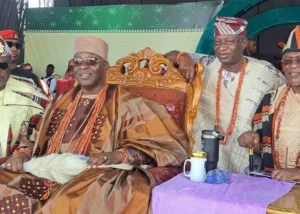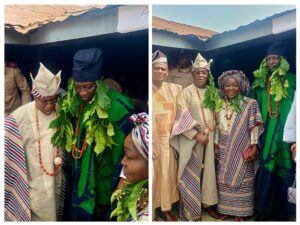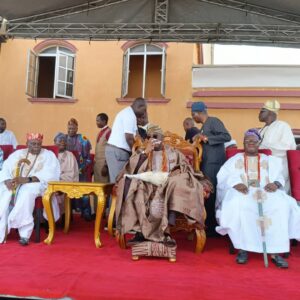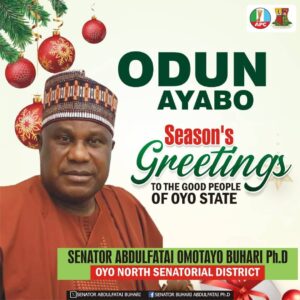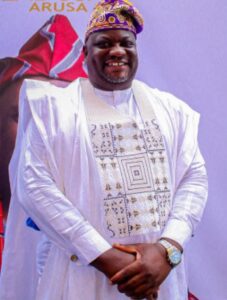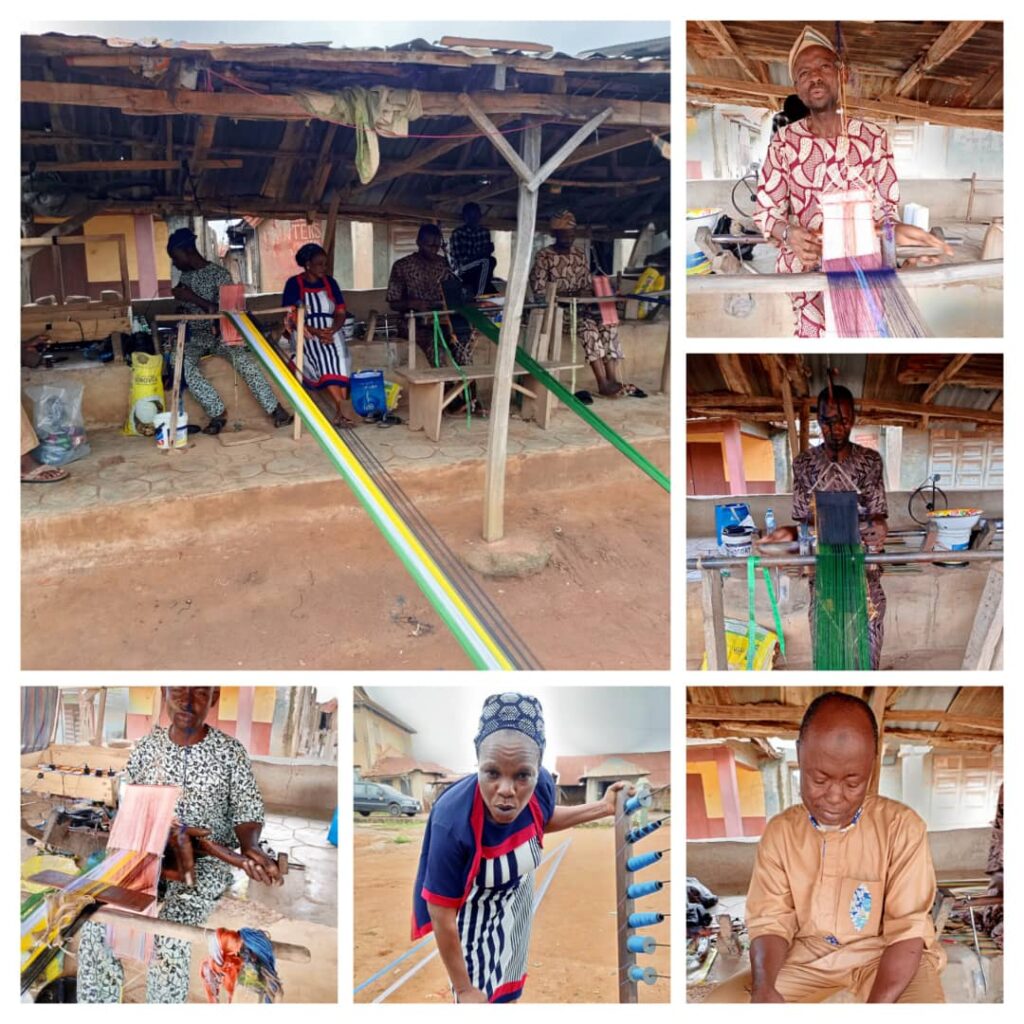
By Sunday Adepoju
Aso òfí, also called aso òkè by people living in the cities, are hand-woven fabrics which beautifully adorn people and showcase the culture of the Yoruba tribe of the South-Western part of Nigeria. It is made on looms.
Nowadays, aso ofi has gone beyond the Yoruba people and found its places in Africa and the world at large.
Historically, aso ofi was worn by people of high social status and it is no exception these days as, even, youths are now wearing it in different styles. There are different types of aso ofi and they include: etu (stripped dark blue), sayan (cartoon brown with white stripes), alaari (crimson) and so on.
In most communities of Yorubaland and beyond like Iseyin, Ogbomoso, Oyo, Ede, Ibadan, Osogbo, Ijebu, Abeokuta, to mention a few, there are makers of aso òfí. While some do it on part-time, with other jobs, others do it on full-time as their sole source of income and livelihood.
In Ogbomoso, however, some weavers of the cultural clothing materials have appealed to the governments, traditional rulers, promoters, among others, to patronise their products; organise cultural events that showcase the Yoruba culture and ensure that locally made Ogbomoso aso òfí are used during significant festivals.
PANNIGERIANNEWS.COM visited some producers of aso ofi at the ancient aso ofi local factory in Fedegbo compound, Osupa, close to Takie, Ogbomoso. They shared perspectives and modalities of expanding the scope of the aso ofi production and how it could create jobs for many youths and even the older generations.
Investigation by PANNIGERIANNEWS.COM revealed that the stages of producing aso ofi fabric include gathering the materials, dying the threads, preparing the loom, weaving the threads, adding the supplementary threads, finishing the fabric and adding embellishments.
An ofi weaver, Alhaji Bashiru Adegboyega of Fedegbo compound stressed the importance of the fabric and called on relevant stakeholders for support and promotion.

Adegboyega said, “The art of making of aso ofi is very special and Yoruba people should tap into this. From ancient times, the woven cloth had existed. The earliest people of Yoruba race wore it on special occasions. Unfortunately, some Yorubas were not promoting it. But thank God our people are now fond of it. It is, however, not compulsory to make it as male flowing gown or esiki.
”There are some other fabric materials that could be combined with ofi and make simple dresses like top and trousers; we can make aso ofi as a slight design on the dresses.”
Calling for traditional rulers’ support, he added, “We will be glad if our traditional rulers, particularly in Ogbomoso, can promote aso ofi. We, as makers/producers of aso ofi, are promoting our culture and one of the ways to promote this aspect of our culture is by wearing ofi as top, trousers, agbada, esiki, or combined with other materials. People who wear ofi are respected and admired.
“The festival that is being planned by Oba Ghandi Afolabi Olaoye, the Soun of Ogbomoso is an avenue to promote aso ofi and patronise the ofi fabric made in Ogbomoso and its environs. It is advised that all such ofi fabrics to be used at the festival are produced by Ogbomoso weavers. This will positively affect the general Ogbomoso’s economy. So, we are beseeching Oba Olaoye to encourage people who will attend such festival to patronise us, indigenous producers.”
Another specialist in ofi production, also from Fedegbo compound, Mr. Ajibade Olatunde Alabi, a holder of Higher National Diploma (HND), said, the vocation sponsored his education. “We can also customise the fabric whether for an individual, organization, a community, a state, and so on.

“Let me also stress that the governments’ and educational institutions’ drive towards skills acquisition and entrepreneurship development still have a place in our vocation. It is our source of livelihood. We grew into this vocation and it has become part of us. During my elementary, middle and high school periods, we would return to this work after getting home.
“We can, however, apply our formal education to modernise this vocation. We have some of our colleagues who are also school teachers. They don’t joke with this work.”
Another specialist Mr Muhammed Adegboyega, also, from Fedegbo compound, Osupa, Ogbomoso shared insights on the process and challenges, thereby calling on stakeholders to promote the vocation.
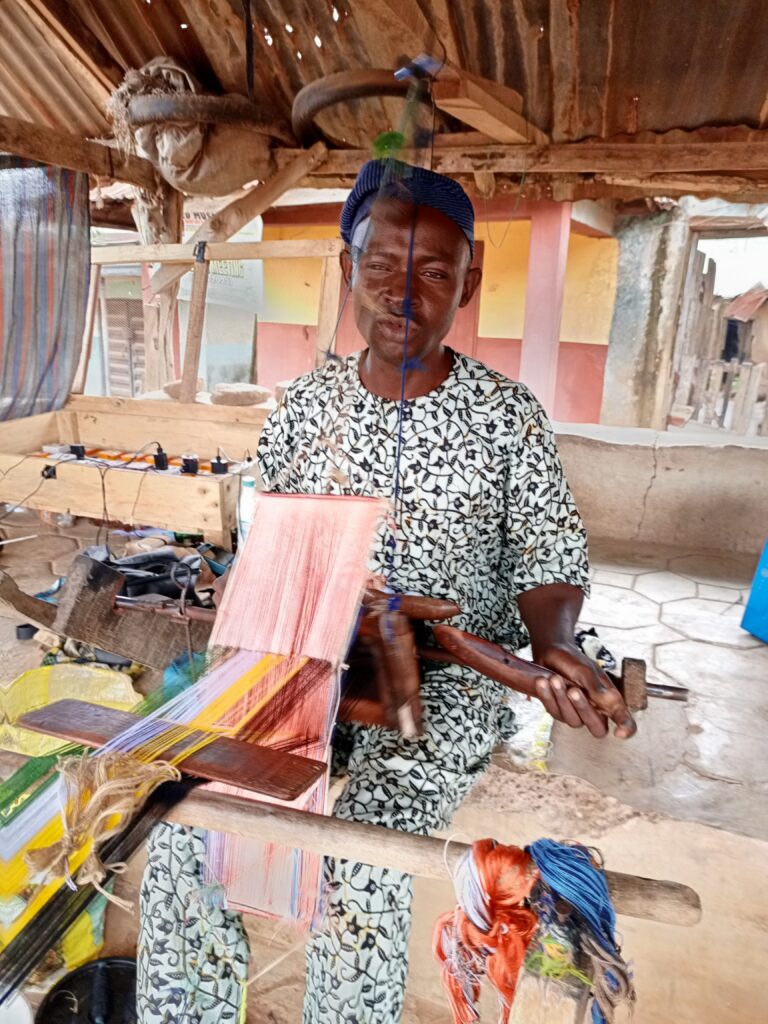
“The vocation was very lucrative in the past because people of high social class were the ones wearing it. The cloth confers on people beauty, class and respect. I can say categorically that no matter how costly your attire is, the ofi cap or headgear complements it. So, you can’t rule the ofi because of the value that the Yoruba culture and African culture place on it.
“The art was stressful in the past compared to current development therein nowadays. To make it then, it took them about three to four months to produce. But now, it is very fast to the extent that it could be produced in bulk within a month,” Adegboyega said.
Stressing the impact of the vocation in reducing unemployment, Adegboyega encouraged the youth to see the vocation as an alternative in the face of unemployment, saying, “I want to encourage the youths to join us in the art. It is our source of livelihood. You can make about N4,000 daily and you know what that translates to every month.”
What govts, traditional rulers, other stakeholders should do
Adegboyega charged the governments, traditional rulers and other stakeholders to assist in the drive to expand their trade and promote the Yoruba culture.
“One of the ways to promote this art and our dressing culture is by sponsoring enterprising youths to come and learn how to weave aso ofi as well as empower the trainees. This art could be learnt within six months and they will be able to stand on their own.
“This could be an empowerment done by governments, traditional rulers and philanthropists within and outside Ogbomoso. It is high time our youths stopped relying solely on white collar jobs. Every weekend, there are events like weddings, funerals, chieftaincy programmes and there are cultural festivals that could be ruled by aso ofi. We can celebrate festivals like Oole Oba by Soun, Odun Oba (Odoje) by Onpetu, Odun Isu by Olugbon, Ajilete Carnival, Iresa Carnival/Day, among others. Aso ofi will play significant role at such events.
“The way aso ofi was made in the olden days was very different from what obtains in the present time. It is now very light in weight. It could be made in a way that there won’t be heat when worn. It could be agbada (flowing gown), simple men women buba, ekiki, dansiki, fila (cap) and gele (headgear). Interestingly, aso ofi is now being used in making foot wears,” Muhammed Adegboyega added.
Mrs Bisi Onaolapo, from Idi Oro in Ogbomoso South Local Government Area of Oyo State stated, “As a woman, I am delighted to say that I am a producer of aso ofi. It is good to stress that the art allows us to do other businesses. I am also a trader. It doesn’t stop us from doing our house chores. But during the period of pregnancy, women will not be able to do the job as expected. Also, as nursing mothers, women may not be able to do the work.
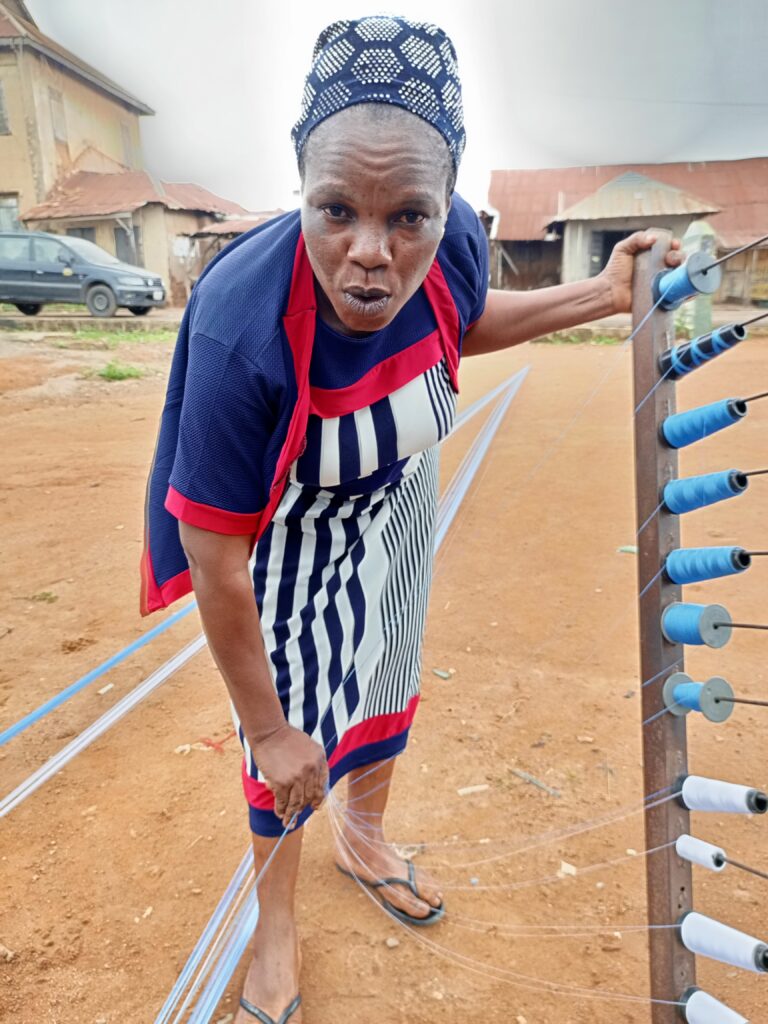
”We must always ensure that we beat the time of delivering to our customers, without any delay and breach of agreement. We have customers from different towns and cities and we deliver to the time. Anybody engaging in this vocation must be fast. Particularly, during rainy season, we study the weather and whenever it wants to rain, we quickly pack our materials lest they be destroyed. That is a challenge.”
Another maker, Mr Tajudeen Gbadamosi, a native of Fedegbo compound in Osupa, Ogbomoso, said, “In this art of making aso ofi, it used to be strenuous and daunting. In those days, the process that we went through has nowadays been simplified. Then, we would rinse the threads and dry them. We would reel the threads. And particularly it is always difficult during this rainy season. Because of civilization and availability of improved materials, customers can get their clothing materials within one or two weeks.
“So my advice to youths is to come and learn this vocation and conquer unemployment in the society. This will also curb various social vices that are manifest in the society. So, I advise all to do the needful by promoting the culture through the production and wearing of aso ofi.”
A Yoruba culture promoter, writer, journalist, broadcaster, communications consultant, Mr. Sayo Alagbe, aligned with the need for revitalisation of the culture of aso ofi among the residents of Ogbomoso, Yoruba land and beyond.
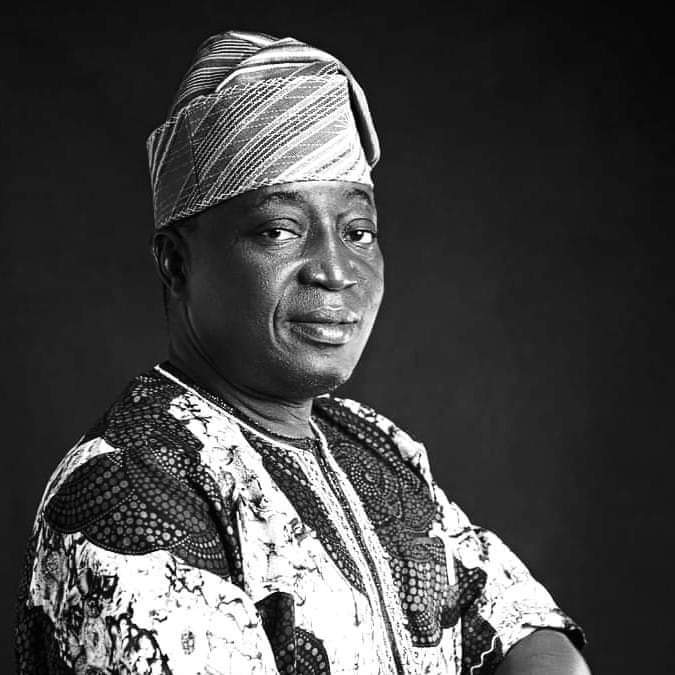
Mr. Alagbe, who harped on economic support cum branding and marketing, called on the Soun of Ogbomoso, Oba Afọlabi Ghandi Olaoye, Orumogege 111, to support the craft and the crafters.
He said, “The first step in revitalizing the ofi weaving tradition is to rekindle a sense of cultural pride among the residents of Ogbomoso and beyond. Organizing community events such as festivals, exhibitions, and storytelling sessions which can highlight the historical and cultural significance of Ogbomoso’s epileptic weaving heritage is a sure way. These events should feature demonstrations by local weavers, allowing the younger generation to witness and appreciate the skill and artistry involved.
“Economic support is crucial for the survival of traditional crafts. Local governments can play a significant role by providing financial assistance, subsidies, and low-interest loans to weavers. Establishing cooperatives can help artisans pool their resources, share knowledge, and gain better access to raw materials at lower costs. Additionally, offering training programmes on modern weaving techniques, quality control, and business management can enhance the competitiveness of Ogbomooso’s weavers in the broader market.”
Dwelling on arketing and branding, he noted that effective marketing is key to making Ogbomoso’s woven products desirable, both locally and beyond.
“Developing a strong brand identity that emphasizes the uniqueness and authenticity of the town textiles can differentiate them from mass-produced alternatives. Creating an online presence through a dedicated website and social media platforms can broaden the reach, showcasing the beauty and craftsmanship of the woven cloth to a wider audience.
“Soun of Ogbomosoland, Oba Ghandi Afolabi Olaoye, can be of help by combining cultural revival, economic support, strategic marketing, community engagement, and innovation. Ogbomoso town can breathe new life into its dying weaving tradition. This holistic approach through public enlightenment, community interactive sessions can inspire pride in the local craftsmanship and encourage residents to choose the town’s woven textiles for their ceremonies, thereby sustaining the art for future generations,” Alagbe submitted.

